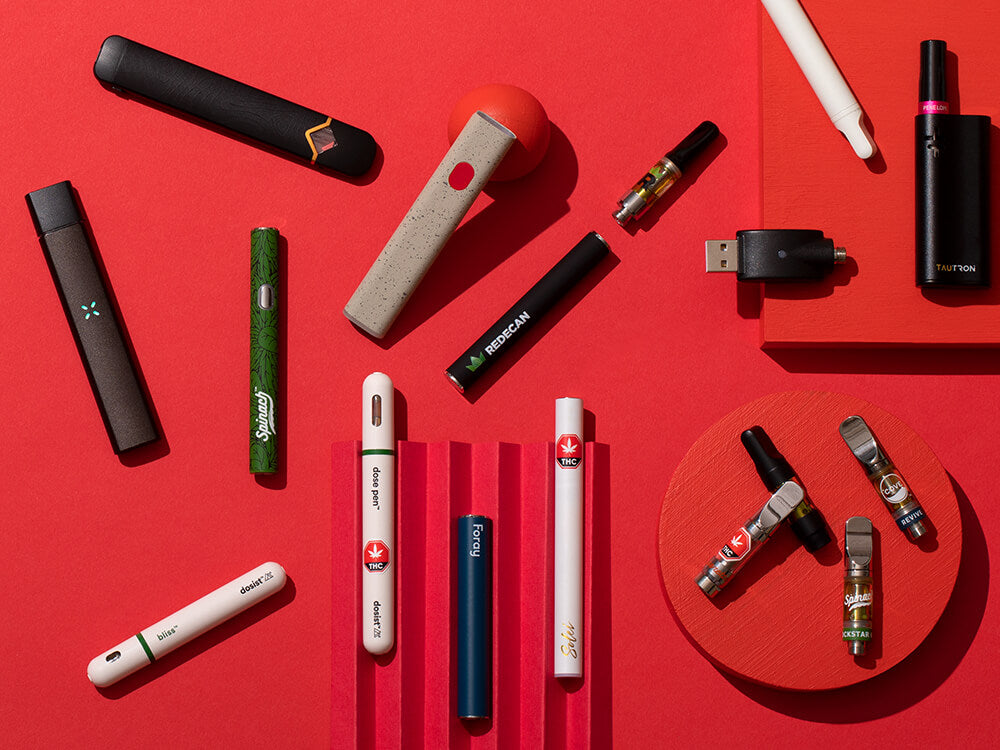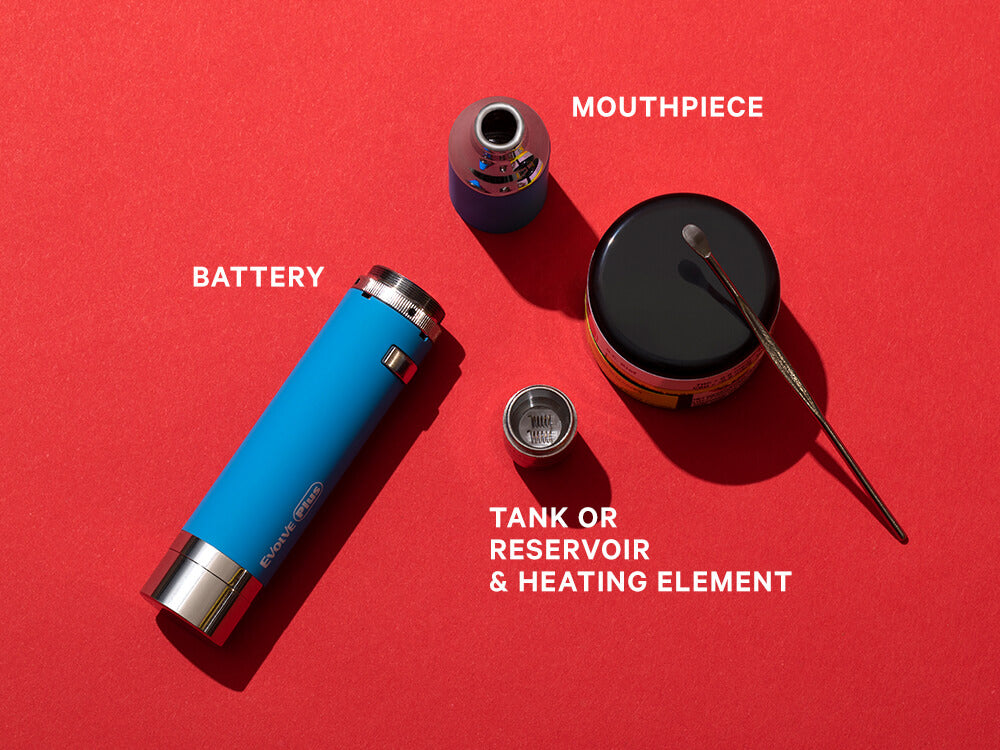Cannabis Basics
What Is Vaping?
Take a closer look at what vaping is, how the device works and factors to consider when shopping for vape products.

Vaping is a smoke-free method of consuming the cannabinoids in cannabis, such as THC, CBD and other minor cannabinoids. Simply put, vaping is the act of heating a cannabis concentrate and inhaling the vapour that’s produced. However, there’s lots more to consider when it comes to the different types of vapes available, how they work, battery compatibility and potency, so let’s dive in.
What is a vape?
Known by many names — e-cigarette, e-cig, vape pen and more — a vape is the device used for vaping. This battery-powered accessory can be purchased as an all-in-one disposable product or as a rechargeable battery that fits with replaceable cartridges. Inside disposable vapes and vape cartridges is the cannabis consumed through vaping, in the form of a liquid cannabis product, such as distillate, full-spectrum extract or live resin.
How does vaping work?
Regardless of the type of device, all vapes are made up of roughly the same four basic components: a mouthpiece, tank or reservoir, heating element and battery. Inside the tank or reservoir (also called a vape cartridge, or cart) is the liquid cannabis product. Instead of burning, the cannabis is heated, releasing these compounds in a vapour, which is then inhaled.
Depending on the make and model of the device, the heating element is activated by pressing a button or when you begin to inhale. Some units may offer control over the temperature, dose and more.
Vaping is sometimes confused with vaporizing: Among other differences, a vaporizer is meant to be used with dried flower and concentrates, such as kief, hash and shatter.

Vaping vs. smoking: The differences
The main difference between vaping and smoking a joint is that with vaping, no substance is burned, so little smoke is produced. When cannabis is inhaled, whether through vaping or smoking a joint, the absorption method is the same — THC is absorbed by the blood in the lungs and moves quickly to the brain, producing an almost immediate effect, possibly within minutes.
Although vape devices produce little visible vapour compared to combusting dried flower, they can’t be used in places where smoking is prohibited.
Note that here we’re talking about vaping cannabis products, not nicotine — the OCS does not sell nicotine products.
Types of vaping devices
Vapes are categorized into three distinct types: disposable vape pens, 510-thread cartridges and closed-loop systems. Understanding the functionality and components of each will help you decide which device might be the right choice for you.
Disposable vape pens
Also commonly referred to as “all-in-one” vapes, these devices come pre-filled. What makes disposable vape pens unique is that the tank is housed permanently within the device, making all of its parts disposable — both the pre-filled tank and the battery.
Some disposable vape pens are rechargeable, because it can often take more than one battery charge cycle to finish the product inside.
510-thread cartridges
These pre-filled tanks are sold separately from the battery component and feature a 510 screw threading that makes them universally compatible with a large variety of batteries. (The name “510” refers to the five-millimetre width of the 10 threads, or grooves, used in the connection.)
While 510-thread carts are thrown away after use, the battery can be recharged and used with other cartridges. Most 510-compatible batteries have a charger included, and there are options to purchase both separately if needed.
Closed-loop systems
This category of vapes includes devices made to work exclusively with cartridges and batteries that are proprietary to a particular brand, such as Pax or Airgraft. Unlike 510-thread cartridges, there is no cross-compatibility with closed-loop vapes — the cartridges, battery, charger and any other accessories are specific to the brand.
Vape carts and potency
The cannabis concentrate inside a vape cartridge will vary in cannabinoid content — it can be high-THC, CBD-dominant or have a balance of both. Some feature minor cannabinoids like CBN and CBG, and if the natural terpenes have been stripped out, cannabis or botanical-derived terpenes may be added to produce specific flavours and aromas. The concentrate can come in many forms, including:
- distillate, a highly refined oil that contains almost no terpenes
- full-spectrum extract, which is typically produced from a single strain using techniques to preserve most of the terpenes and cannabinoids
- live resin, which is produced using heat and pressure, maintaining a lot of the terpene content
Read the product label carefully to find out the potency: Vapes currently on the market can have concentrations of more than 900 milligrams per gram (90%) THC. (Compare that to very strong dried flower, which is about 300 milligrams per gram, or 30%, THC.)
When trying a vape product for the first time, take a small puff or “pull,” and wait to see how it affects you before consuming more.
Vape batteries and compatibility
When shopping for a vape battery, pay close attention to what type of pre-filled cartridges it’s intended to be used with. Some batteries are only compatible with specific brands of cartridges, as in the case of close-loop systems, while 510-thread batteries are more universal and can be attached to most 510-thread carts.
Pros and cons of vaping devices
As with any cannabis product, there are a lot of factors to consider when choosing a vape device, specifically around price, convenience and compatibility. Let’s consider the benefits and drawbacks of the three basic types of vapes.
Type |
Pros |
Cons |
|---|---|---|
| Disposable vape pen |
|
|
| 510-thread cartridge |
|
|
| Closed-loop system |
|
|
What to consider before vaping
The main consideration in purchasing a vape? Always buy legal. Products available on the illegal market have not been tested for microbial and chemical contaminants, nor held to any safety standards.
As required by the Canada Consumer Product Safety Act, cannabis accessories sold by OCS.ca and Authorized Cannabis Stores must go through rigorous quality assurance processes. And only cannabis vaping products from producers with a license from Health Canada may be sold.



















